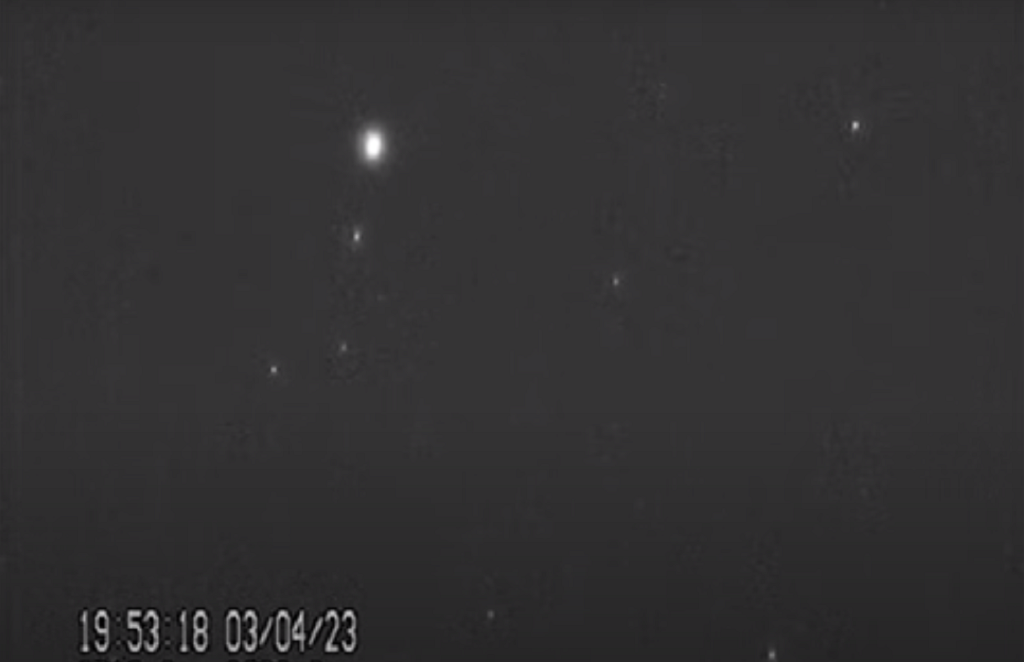Description

Disclaimer: Copyright infringement not intended.
Context
- BlueWalker 3 is a prototype satellite that is part of a larger satellite constellation planned by its owner, AST SpaceMobile.
Details
- Launched in September 2022, it stands out for several reasons:
- Brightest Object in the Night Sky: BlueWalker 3's luminosity makes it one of the brightest objects in the night sky, surpassing even the brightest stars. This exceptional brightness has raised concerns among astronomers.
- Communications Array: BlueWalker 3 is noteworthy for being the largest-ever commercial communications array deployed in low-Earth orbit. It is designed to establish direct communication links with cellular devices, providing high-speed connectivity using 3GPP standard frequencies, achieving 5G speeds.
- Potential Impact on Radio Astronomy: Due to its operation in wavelengths close to those observed by radio telescopes, BlueWalker 3 has the potential to interfere with radio astronomy observations.
Satellite Constellation
- A satellite constellation refers to a group of artificial satellites that work together as a system.
- Global or Near-Global Coverage: Satellite constellations are designed to provide permanent global or near-global coverage. This means that at any given time, anywhere on Earth, at least one satellite from the constellation is visible.
- Multiple Orbital Planes: To achieve comprehensive coverage, satellites in a constellation are typically placed in sets of complementary orbital planes. This distribution ensures that the satellites can collectively cover the entire Earth's surface.
- Ground Stations and Inter-Satellite Communication: Satellite constellations are often connected to globally distributed ground stations to facilitate communication with Earth. Additionally, they may utilize inter-satellite communication, enabling seamless connectivity between satellites within the constellation.

Impact on Astronomical Studies
- Brightness Comparable to Stars: BlueWalker 3's luminosity is on par with the brightest stars in the constellations of Canis Minor and Eridanus, making it a prominent feature in the night sky. This brightness interferes with ground-based telescopes, hampering astronomers' ability to observe celestial objects and phenomena.
- Noise for Radio Astronomy: Bright satellites like BlueWalker 3 pose an additional challenge for radio astronomers. Their presence in the field of view of telescopes generates noise that can disrupt radio astronomy observations, akin to staring at the sun without protective eyewear.
- Visual Impact: BlueWalker 3's deployment of its phased array antenna dramatically increased its brightness, making it easily visible to the naked eye from dark sky sites. This level of luminosity disrupts the natural dark sky environment essential for astronomical observations.
Challenges in Predicting Brightness
- Complexity of Prediction: Predicting the brightness of satellites is a complex task due to their continuous movement, altitude changes, and varying positions relative to both the observer and the sun. These factors affect the amount of sunlight they reflect toward Earth.
- Material Variability: The material used in satellite construction further complicates brightness predictions. Satellites do not uniformly reflect light in all directions, making it challenging to anticipate their impact on the night sky.
Conclusion
Efforts to mitigate the impact of bright satellites on astronomy have faced challenges. Collaboration between researchers, satellite operators, and policymakers is crucial to understanding how satellites reflect sunlight better. Improved insights into satellite behavior will enable the development of effective mitigation strategies to preserve the sanctity of the night sky for astronomical research and observation. However, the growing trend of launching larger and brighter satellites demands sustained attention and action to protect the integrity of astronomical studies.
|
PRACTICE QUESTION
Q. The launch of the BlueWalker 3 satellite and the concept of satellite constellations have significant implications for both telecommunications and astronomy. Discuss the key features and functions of BlueWalker 3, highlighting its impact on night sky visibility and radio astronomy. (250 Words)
|














